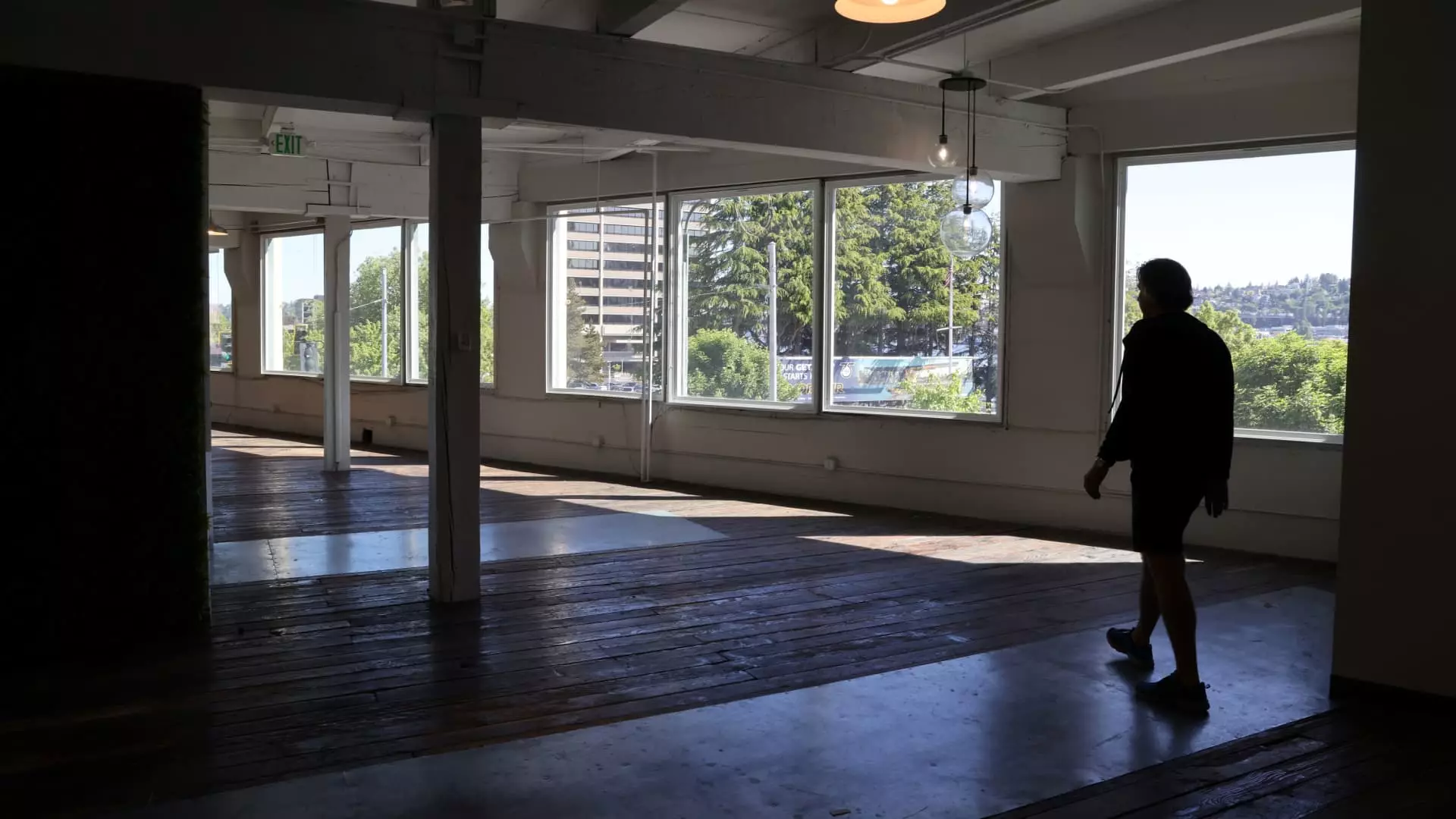After years of turmoil, the U.S. office market finds itself at a critical juncture, one that speaks volumes about our changing work culture. For the first time in a quarter of a century, demolitions and conversions of office spaces have outpaced new constructions, according to recent data from CBRE Group. It’s a stark revelation—and a poignant sign that the era of traditional office employment has been fundamentally altered, if not irreversibly so. In a world where the specter of remote work looms ever larger, the very fabric of office real estate is being ‘shredded,’ reflecting our collective shift away from cubicles and water coolers.
This year alone, approximately 23.3 million square feet will be sacrificed for demolitions or repurposed for other uses, a staggering figure when juxtaposed with the mere 12.7 million square feet expected to emerge from new construction. It’s evident that a reconstruction of priorities is underway—and the stakes couldn’t be higher. As more office blocks become vacant, and with an office vacancy rate lingering around a record 19%, we are challenged to ask ourselves: What does the future hold for urban landscapes long dominated by commercial towers?
Recovery or Further Decline? The Complex Dynamics of Demand
While it might seem like a bleak landscape for commercial real estate, some experts speculate that the tide may, in fact, be beginning to turn. Employers are reportedly pulling workers back into physical offices as the economy tightens. More workers, pressed by a deteriorating job market, are willing to accept the rigidity of in-person requirements. There has been a notable surge in office leasing activity—a promising 18% increase in the first quarter of this year alone compared to the previous year. However, let’s not kid ourselves; this rebound comes after a protracted period of stagnation and negativity.
The groundwork for a robust office revival, one that policymakers and analysts are keen to tout, relies heavily on the surplus of new office developments slated for the market. Yet, it feels misguided to herald it as a cure-all. The truth is that the market’s fortunes rest precariously on the shifting whims of corporate strategies and employee sentiments that are moving towards flexibility. Will this uptick in demand lead to sustainable growth? Or will corporate America find itself backtracking again, scrambling to assess the viability of office hubs in the face of increasing remote work options?
The Class Divide: An Uneven Recovery in Office Spaces
The narrative of recovery varies significantly depending on the segment of the office market one examines. In the prime space—and what has been dubbed “Class A” office environments—a revival is already underway. Here, some major real estate investment trusts (REITs) like Vornado and Alexandria Real Estate Equities are reaping the benefits. However, this unevenness in chance for survival raises significant concerns about the future of lesser-utilized office spaces.
As obsolete buildings are gradually torn down or converted into residential units, we must confront a harsh reality: the properties that can’t adapt to the new normal will likely be left behind. As Jessica Morin from CBRE asserts, the highest and best use of these properties is to maximize vibrancy in urban neighborhoods. Yet, as this trend progresses, we must caution against a property market that sidelines structures that don’t fit the modern mold. If the conversion craze accelerates while ideal buildings dwindle, we may find ourselves complicit in a housing crisis too, as urban areas struggle to meet the growing demand for multifamily housing.
Headwinds Beyond the Horizon: Challenges Ahead
Indeed, the future of office conversion isn’t without its obstacles. Rising costs for labor, materials, and financing remain a significant hindrance to project initiation. Such challenges underscore a potential slow grind toward recovery in a market that is already strained. Add to this the crucial question of what happens when the easy conversions dry up; the reality remains that a number of buildings are simply unsuitable for repurposing.
In an increasingly polarized political climate, the choices we make regarding urban planning and real estate will bear consequences that extend beyond economic metrics—they speak to our priorities as a society. Will we commit to transformative, adaptive reuse strategies that enhance our neighborhoods, or will we continue to cut corners in justifying profits?
As we stand at this crossroads, it’s essential to thoughtfully consider the implications of our decisions in reshaping the American workplace. In a world forever altered by the pandemic, it’s crucial that we embrace innovative and inclusive solutions tailored for a future we are yet to fully comprehend. The stakes are high, and the time for decisive action is now.

